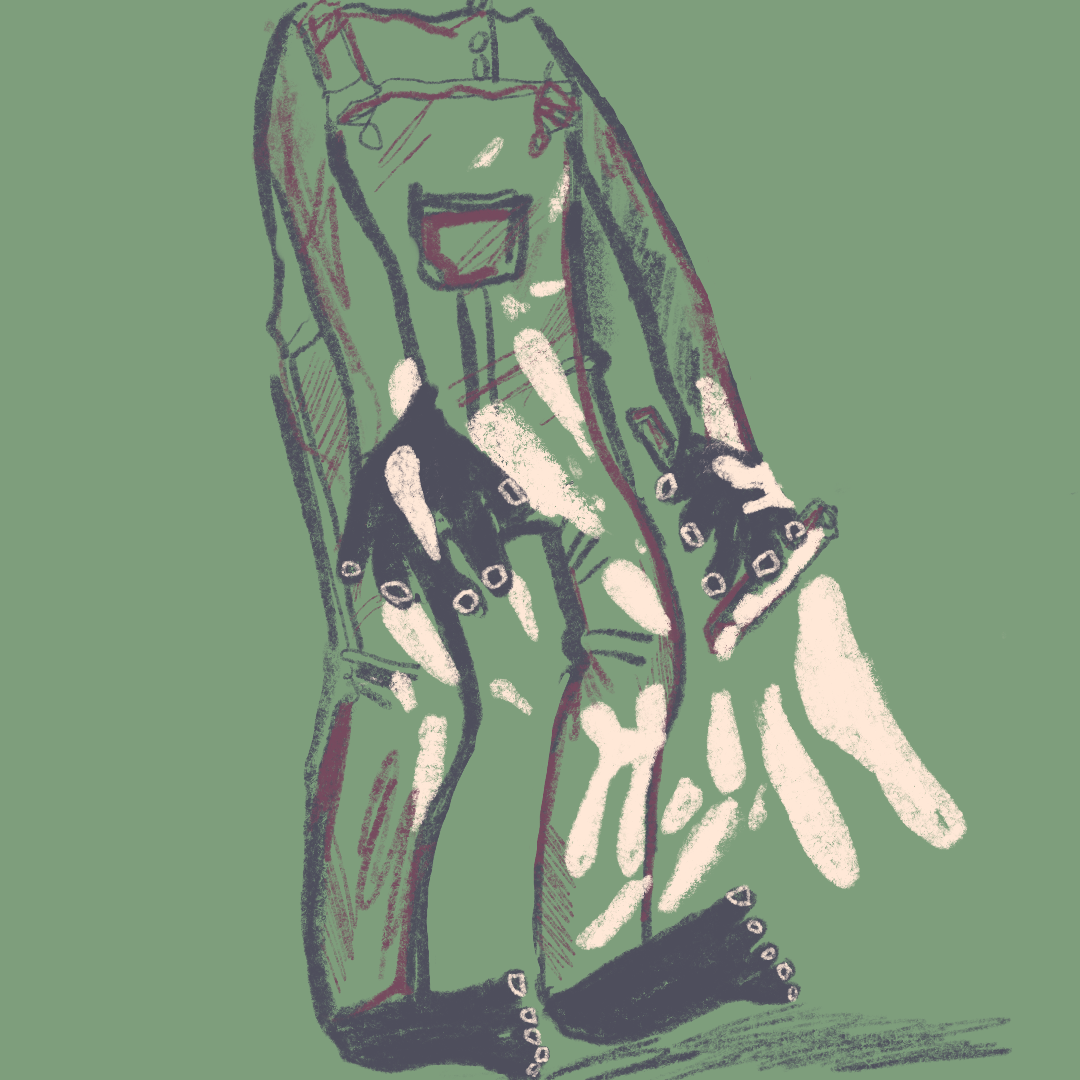By Ellie Pagano (she/her)
Artwork: Lizzie Eidson
We bought a house! A caption to millions of instagram posts peppering our explore pages. A young, beaming, couple invites us along for their renovation journey. Reels featuring dungarees, paint fights and shirtless boyfriends lead us along a sepia-hued digital journey turning derelict to dream.
Instagram’s aesthetically-pleasing home renovation posts have rapidly increased; welcome to a new line of influencer, the insta-renovator, with some harbouring followers in the millions. Though satisfying our craving for shiny before-and-after videos, these interior influencers seem to gloss over the financial toll of buying and renovating a new house, a far-off dream for many. Is this wave of do-it-yourself doyens inspiring creativity and determination or are these houses just castles in the sky?
After typing in #homerenovation on Instagram I was met with over 5 million posts. Damaged drywall is painted pink; a woman wears a t-shirt three sizes two big with a roller in hand, paint glittering on her legs, all whilst a shirtless man seductively sands a hardwood floor. Every post is perfect, glossy, and idealised.
Through the rosy glass of Instagram, these insta-renovators are selective with what they show, often airbrushing ugly and derelict content from their meticulously curated profiles. Though this filtered existence is attractive and can inspire creativity, its nailing down of our attention can skew our understanding of the hardships of renovating a house. Where is the mould removal? Where is the cistern instalment? Where are the heated arguments between couples? The curation of these digital havens has to appeal to our appetite for aesthetic feeds, which has created greater demand for this content and therefore greater incentive for financial investment from Instagram into these accounts.
The desire to become an influencer is an ever-growing career prospect for the masses. It’s convenient, flexible, and extremely well paid if you engage with your audience. A report conducted in 2019 revealed that an influencer would only require just over 40,000 followers to make the National Average Salary in the UK (£29,009), by uploading a handful of stories and posts per month. These statistics are tantalising and undoubtedly act as a catalyst to inspire many to try and breach the online sector. However, in such a saturated industry, where creating new and authentic content is challenging, it is unsurprising that it is difficult for many to reach the 40,000 followers threshold. For this reason, these whimsically inspirational and sickeningly positive images can seem condescending and feel like a far-fetched reality.
Often, the messages perpetuated by these influencers can come across as rather tone deaf. In a review conducted by Living360 with Jen Rothbury, who runs the Instagram account @crack_the_shutters, the self-declared “DIY-Demander” stated: ‘Don’t be afraid to get stuck in – it may seem daunting but there are so many things you can do yourself with a bit of practice and the right tools’. Jen has amassed a following of more than 200,000, more than five times the number needed to accumulate the average national salary in 2019.
On the other hand, we have the polished, neutral slicked pic-collage of Chelsea Stonier (@thehousethatblackbuilt), which features gleaming marble countertops, sanded hardwood floors, and monochrome portraits of her and her dog. The account certainly embodies the ideal of the highly curated Instagram page which Stonier consciously alludes to in one of her posts: ‘Come behind the scene of my curated Instagram to see the raw renovation reality’. This caption accompanies, again, an image of Stonier in monochrome, perched on a paint splattered staircase. Her hair is slicked meticulously into a bun and her makeup is minimalist and tasteful, while she is dressed stylishly in all black, complete with heels and twinkling earrings. This post is an ad and has obviously been tentatively curated, which makes ‘raw renovation reality’ ring with untruth.
That said, the insta-renovators occupy a less sinister side to influencing in the social media sphere compared to other ventures such as perpetuating certain fashion or fitness ideals. They can be platforms to inspire, insight creativity, and scratch our social media itch with satisfying before and after videos.
There are many accounts which shed a light on the ugly reality of renovation, highlighting that these renovations are possible, but they are difficult and not achievable through a few DIY’s. However, when young people are living from paycheque to paycheque, and the threat of not being able to afford the heating bill is looming, are these glamorised videos really helpful? It seems that oversaturation of these posts are just another way of inciting feelings of inferiority, another way of reinforcing the digital wall, shielding reality in pastel pink walls.

